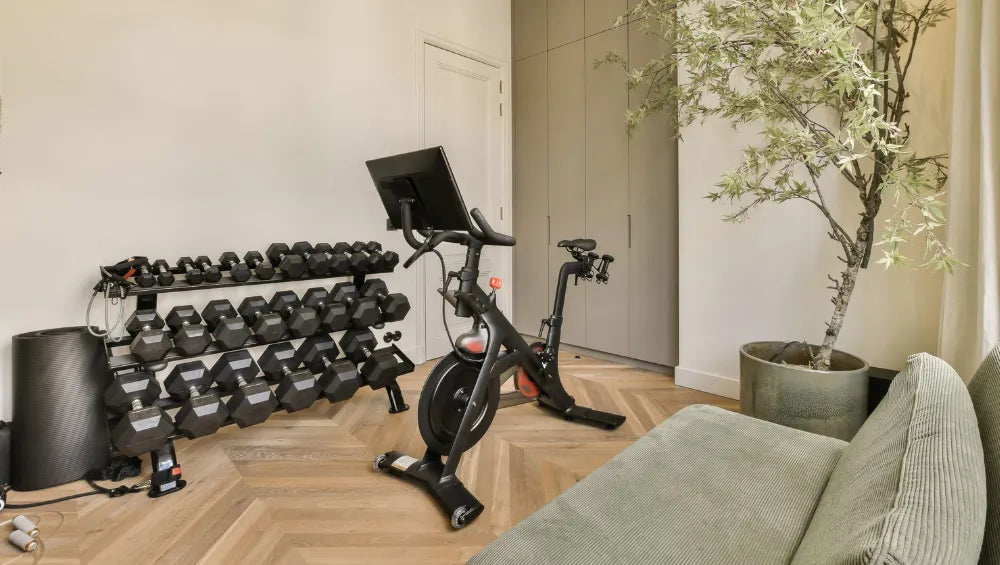Using a jump rope in sports training offers numerous benefits. It strengthens the entire body and also offers cardiovascular benefits. Why is jumping rope an effective exercise for strengthening your muscles? We'll tell you everything.
A complete exercise to work the whole body
Jumping rope isn't just a child's game; it's also a complete exercise that uses most of the body's muscles. Indeed, when you jump rope, several muscle groups are used (hands, arms, and legs).
Lower limb and abdominal muscle activity
The leg muscles are, of course, the first to be affected by jumping rope. The quadriceps, hamstrings, calves, and hip stabilizing muscles are constantly engaged during jumping, which helps develop strength, endurance, and stamina.
The abdominal muscles play a vital role in maintaining spinal stability and overall balance. Constantly working them while jumping helps strengthen them, improving core strength and overall posture.
Mobilization of the upper limbs and back
Although they are not directly involved in the jump, the upper body muscles, namely the arms and shoulders, are also used throughout the exercise. They are responsible for the rope's movement and must coordinate their actions to ensure proper rotation and a smooth trajectory.
Additionally, the back muscles, especially those located around the spine, also work in synergy with the abdominals and glutes to maintain stable posture and correct lumbar lordosis.
The cardiovascular benefits of jumping rope
Jumping rope is also a cardio exercise that helps improve your cardiovascular system. This exercise works your heart and promotes good blood circulation throughout your body. Here are some specific benefits:
- In addition to engaging a large number of muscles, jumping rope is also a powerful cardiovascular workout. The entire body's effort requires a large amount of oxygen, which forces the heart to beat faster and increase its flow to supply the muscles with oxygen-rich blood.
- Regular practice of skipping rope thus helps to improve cardiac and pulmonary capacity, and therefore participates in the prevention of cardiovascular diseases . It can also be beneficial for people suffering from circulatory problems, as it stimulates venous return and peripheral blood circulation.
Heart rate adjustment
When jumping rope, your heart rate increases rapidly, reflecting the intensity of the exercise. By adjusting the speed and duration of your workout, you can customize your program to achieve different goals: improving endurance, developing explosive strength (for example, by performing short but intense sets), or even losing weight.
Promotes weight loss and muscle building
Jumping rope is considered one of the best cardio exercises for burning calories and losing weight. If you're looking for an activity that can burn a lot of energy, a 30-minute jump rope session can burn up to 500 calories . Of course, this figure varies depending on the intensity of your session and your metabolism.
Establish a suitable program
To optimize your weight loss while strengthening your muscles, it is essential to create a training program adapted to your level. Indeed:
- Excessive practice can lead to injuries.
- Conversely, sessions that are too lacking in dynamics will not have the desired effects on your body.
Do not hesitate to seek advice from a professional to determine the duration and pace of your sessions based on your goals and abilities.
Develops endurance and coordination
Jumping rope is also a great way to improve your endurance and coordination. This exercise requires good synchronization between the movements of your arms, legs, and core. Over the course of your sessions, you'll develop:
- Better muscle responsiveness .
- Greater stability at the joints (ankles, knees, hips).
- An overall gain in balance thanks to stimulation of the proprioceptive system.
Variety of exercises to diversify the benefits
There are several ways to have fun with a jump rope, allowing you to diversify the exercises so as not to fall into monotony and target different muscle groups:
- Basic Jumps: This simply involves jumping with your feet together while keeping your arms straight out to the sides, turning the rope with your wrists.
- Alternating jumps: Jump by lifting each leg alternately, as if jogging on the spot, supporting yourself on your tiptoes.
- Double jumps: For the more experienced, this variation involves passing the rope twice under the feet in a single jump, which requires increased coordination and speed as well as better physical condition.
- Crossover jumps: To further work the shoulders and core, cross your arms in front of you while passing the rope over your head, then quickly open your arms to allow the rope to pass under your feet.
Beyond these different types of jumps, it is also possible to adjust the intensity and duration of the sessions according to your objectives and your level, for example by alternating periods of more intense work with moments of active recovery, in a HIIT ( High Intensity Interval Training ) type format.
Integration into different training programs
Jumping rope can also be incorporated into different types of workouts , regardless of fitness level. For example:
- As a warm-up before a workout to activate all the muscles and prepare the body.
- As the main exercise in a muscle strengthening or cardiovascular improvement program.
- In addition to other sports activities to vary and diversify training.
Benefits for other sports
If you participate in other sports, jump rope training can help improve them. For example:
- For combat sports , it allows you to work on explosiveness and liveliness.
- For runners , it strengthens leg muscles and helps reduce the risk of injury.
- For dancers or gymnasts , it promotes better body control.
Precautions before starting the practice
Despite its many benefits, jumping rope can also put some strain on joints, especially the knees, ankles, and back. Therefore, it's important to follow a few precautions to avoid injury:
- Wear suitable shoes with good cushioning to reduce impact on joints.
- Jump on a soft, non-slip surface that helps absorb shocks (for example, a parquet floor rather than tiles).
- Start gradually, especially for people who are not used to this practice or have a history of injuries.
- Do not hesitate to consult a doctor or a sports professional before starting to ensure that skipping rope is well suited to your physical condition.
- Hold the handles of your rope firmly to prevent it from slipping during exercise.
- Pay attention to the length of your rope and adjust it if necessary to be able to jump with ease.
- Make sure to keep your back straight and your abs engaged when jumping, as this will help engage your postural muscles.
- Also remember to vary your jumps and rhythms to further stimulate your muscles (jumping on one foot, feet together, etc.).
Jumping Rope: In Summary
Jumping rope is therefore a particularly effective exercise for strengthening your body and improving your overall fitness. Simple, affordable, and versatile, it's suitable for all levels and can be practiced both indoors and outdoors. So don't hesitate any longer and start jumping rope to experience all the benefits!








